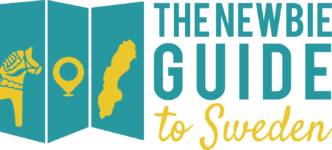Are you an international healthcare professional looking to relocate to Sweden? The good news is that there’s plenty of work opportunities for medical doctors, nurses, midwives, paramedics, pharmacists etc. The not so good news is that this is not something you get over and done with within a few weeks.
Great news
If your diploma is from a non-EU country, you will need to have your licence to practice validated and approved by the Swedish authority Socialstyrelsen (The National Board of Health and Welfare). If you are trained within the European Union, the process is simpler.
Still, everyone needs to prove they can speak Swedish on level C1 according to the Common European Framework of Reference (CEFR). (Not the same as SFI C, that is level equivalent to level A2 according to CEFR).
Not amazing news
The first question people ask me when learning this is ‘how long will this take?’. And my answer is, of course, it depends. I have taught Swedish for more than ten years, and how long it takes people to learn a language varies greatly.
It depends on many factors, such as ‘talent’, quality of teaching, method, etc. but most of all how much time you can invest in learning and revising in the long term. However, if you study full time and take your Swedish-learning seriously, it will take about a year.
There are two ways to do this. If you have managed to become part of the Swedish ‘system’ and have a personal identification number (personnummer), you can enrol to Svenska som andraspråk (SAS) on Komvux.
If you pass SAS 3, this counts as proof of sufficient language level. You can also organise your studies on your own, and validate your skills through taking TISUS, a Swedish language exam on CEFR level C1, that tests your reading, writing and speaking skills. Currently, you may also ask the language centre to validate your skills.
E-learning course: Your Swedish learning options
Are you feeling a bit overwhelmed about The Swedish stuff? Where can you learn? How does it work? Can you join the different options if you don’t have a Swedish personal number? We’ve got you covered. Over the years we’ve been repeatedly told just confusing this process can be so we created a digital course with all the information you need to make a good decision. Here you will learn about:After finishing this course, you will be able to make an educated study choice and you will learn the most important key words and phrases for studying Swedish in Sweden. Hopefully, Swedish will start making sense! Sign up to your course here
- The different study options to learn Swedish in Sweden.
- The differences between study alternatives.
- How much Swedish (and other things) you need for other educational paths in Sweden as well as to work in Swedish.
What is medical Swedish?
This means that only your generic — and no medical — language skills are tested. Although this may make the validation process a bit simpler, you can feel a bit overwhelmed when you start working and need to use medical Swedish within a professional context. There are, however, plenty of things you can do to prepare for this.
First of all, learn what medical language really is. When you trained for your profession, you probably had to learn many new terms to describe body parts, organs, diseases, conditions and symptoms. Many of these words derive from Latin and Greek, regardless of what language you learnt them in. The good news is that these words are often the same in a Swedish context. Small variations in spelling and pronunciation occur, but you will have no trouble reading such terms.
Beyond the terminology
The bad news is that this terminology is not enough to get you by. In Sweden, there are strict laws regarding the rights of the patient and one of them is that each patient must understand what healthcare professionals communicate to them, directly — at an appointment, and indirectly — when reading their medical records.
Terminology derived from Latin and Greek may be used between peers, but not when talking to a patient or writing their medical records. And almost for every word, there is also a ‘Swedish’ equivalent. For example, you may recognise “calculus renalis”, but you need to be able to say ‘njursten’. ‘Anemi’ may seem familiar to you, but not your patients. You will need to say ‘blodbrist’. ‘Rubella’ is Swedish but all Swedes say ‘röda hund’.
You will also need to learn how to describe examinations, treatments and side effects in everyday language, and to understand your patient describing their symptoms in everyday Swedish.
Free resources
There are several resources for this. One that is freely available is 1177.se. This is a platform designed for patients to read about different conditions and learn about their treatments, as well as getting in touch with a healthcare provider. If you are an intermediate learner, you will find some excellent material here, written in the type of language you will have to use when communicating with your patients.
For complete beginners, I can recommend the book Kroppen på svenska by Emil Molander. This is a dual-language textbook where you learn more than 300 anatomical nouns in Swedish, including pronunciation. By the same author, there are also two excellent books on CEFR level B2: Läkarsvenska (Doctor’s Swedish) and Journalsvenska (Medical Journal Swedish) both co-authored by Emil Molander.


Leave a Reply